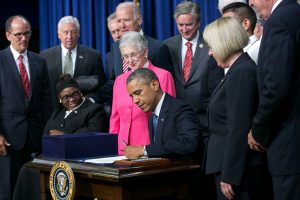
By Gary A. Officer
Traditionally, economists will measure the health of our nation’s economy on the basis of housing starts – the number of home construction projects that have broken ground or the monthly unemployment figures. While housing starts have stagnated in recent months as interest rates have slowly increased, the unemployment rate has continued its downward decline to 3.9 percent.
This is a source of optimism for the current administration and great news for job seekers. However, labor scarcity still seems to be a prevalent issue for Dallas’ economy even with unemployment levels above the national average.
That’s where Dallas’ model of a strong local economy and high unemployment growth has had a positive influence on labor force participation of older adults – an often overlooked, yet critically important contributor to our nation’s continued economic fortunes. Older workers are the fastest-growing segment of the U.S. workforce with one in five workers over the age of 55 and according to Dr. Joseph Coughlin at MIT. The over 50 represent what he calls the “Longevity Economy” arguing that the economic activity of this group is over $7.1 trillion and accounts for over 100 million jobs and $4.5 trillion in wages and salaries.
Much of this shift is due to the behavior of the nation’s two largest populations: Baby boomers who are delaying retirement and millennials who are entering the workforce later. You might expect finances to be the reason older people are working longer. It is for many. However, many older workers remain in the workforce because they actually enjoy working and they provide a healthy mix of professionalism, experience, and maturity that employers find invaluable. However, with the upcoming midterm elections and considering the North Texas economy faces a slower population growth, higher home prices and a thinning workforce – where does that leave Dallas aging workforce?
The current administration has proposed significant reductions in domestic funding ($54 billion to be exact) over the past two years, including a 40 percent cut to the Labor Department’s biggest federal worker retraining program Workforce Innovation and Opportunity Act. They are even considering the idea of total elimination of the Senior Community Employment Program (SCSEP) – the nation’s oldest and only workforce training program for older low-income Americans. Older Americans entering the workforce have already trended towards lower paying jobs, and the gig economy and the lack of SCSEP only isolates this workforce further.
Though Congress has been seen as “more than willing” to open its checkbook for workforce development programs in recent months with the National Council for the American Worker it doesn’t come without its pitfalls. According to the council’s research, more than 85 percent of government and private spending on workforce development is focused on people 25-years-old or younger.
By comparison, public and private expenditures on workers over 40 are minimal and even less for people with only a high school diploma. Congress has habitually underfunded such federal programs to retrain workers displaced by technology or factory relocations. Trump’s new executive order will hopefully address those shortfalls and encourage private companies to offer educational opportunities instead of layoffs.
The Administration’s strategy, however, is ultimately unsustainable due to the massive tax cuts was passed into law earlier this year. The upcoming midterm elections will determine whether training programs critical to workforce aspirations of older Americans and the underplayed remain funded by the federal government making it essential to get out there and vote. The continued investment in workforce training is vital to our long-term economic competitiveness, and your vote can determine the outcome.
Gary A. Officer is the President and CEO of Senior Services America, Inc.








